
views
- Bad eggplant looks wrinkly and dull-colored. Squishy texture and a rotten odor are other common signs of bad eggplant.
- Fresh eggplant lasts 2-3 days at room temperature, 5 days in the refrigerator, and 8-12 months in the freezer.
- Eggplant that turns brown after you slice it is okay to eat. The brown color is from oxidation.
Signs That Eggplant Is Bad
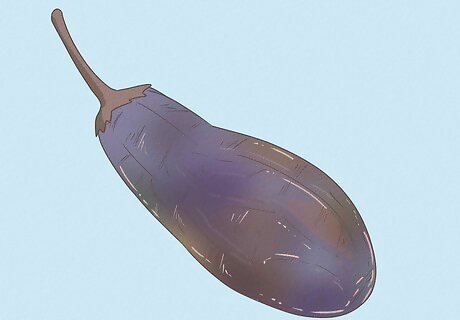
Lusterless and shriveling exteriorA ripe, safe-to-eat eggplant looks really shiny and has tight, smooth skin. If your eggplant has lost its luster and/or looks wrinkly, it’s past its prime and no longer good to cook with. Keep an eye out for brown spots around your eggplant, too. These spots are another sign that your eggplant is on its way out.
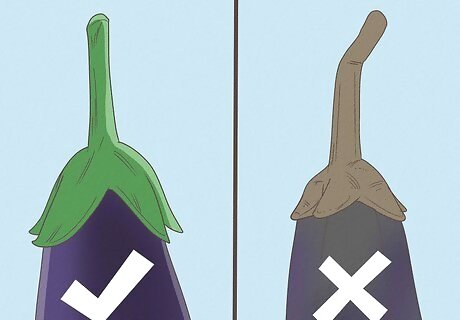
Dull coloringTake a close look at the stem growing from the top of the eggplant. Is it green and vibrant, or is it starting to fade? A withered, unhealthy-looking stem could mean that the eggplant is damaged and not good to cook with. Examine the body of your eggplant, too; depending on the variety, it should be a shiny, bold white or vivid purple hue, rather than a faded, listless color.
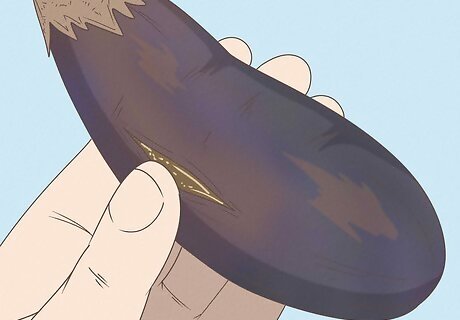
Squishy texturePress along the body of the eggplant with your finger. Does it have a tiny bit of “give” to it, or is your finger breaking through the surface? If the vegetable is mushy throughout, you’re better off throwing it out and using a firm, ripe eggplant instead.
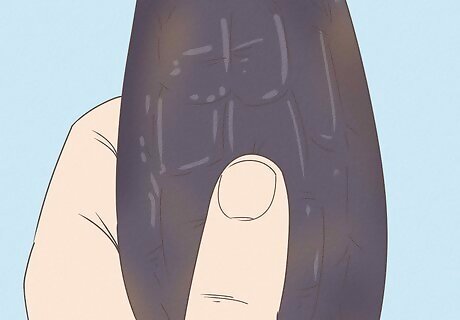
Brown-spotted and slimy interiorIf you’ve already bought the eggplant, slice into the flesh and take a look at the color. Is it white throughout, or does it look brown? Tap the surface of the inner eggplant with your finger, too—if it’s discolored and slimy, the eggplant definitely needs to be thrown out.
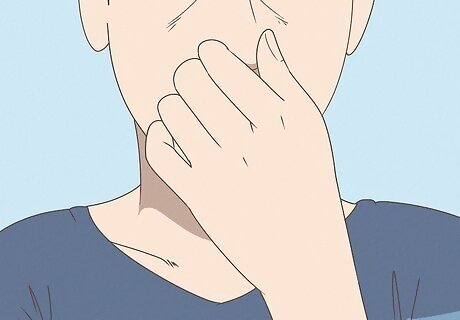
Rotten smellTake a quick whiff of your eggplant and see if you detect any bad odors. If it smells nasty, throw it out right away. Rotten, smelly eggplants may also have bugs hanging around.
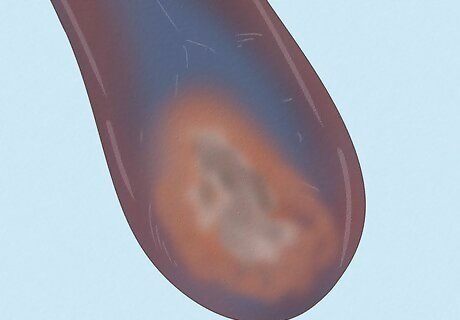
Mold and mushinessMost mold on your eggplant is a big red flag, especially if the plant is soft and mushy to the touch. If your eggplant is still firm and the mold spots are really small, it’s safe to cut off the affected spots and eat or cook with the rest of the plant. Make sure to leave a 1 in (2.5 cm) perimeter around the mold spot as you slice it out. That way, the contaminated part of the veggie can’t touch the rest of the plant.
How long does eggplant last?
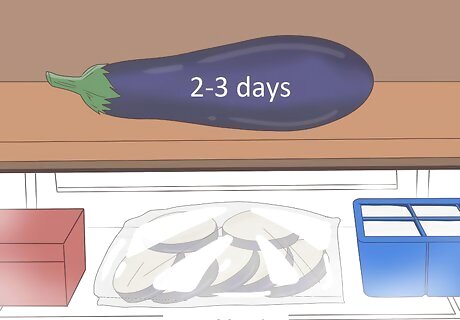
Fresh eggplant lasts for about 2-3 days at room temperature. Eggplants have a super short shelf life and start to go bad after 2-3 days. They don’t last very long in the refrigerator, either—even when stored properly, refrigerated eggplants are only good for about 5 days. Eggplants last about 8-12 months in the freezer.
Is it okay to eat eggplant that is brown inside?
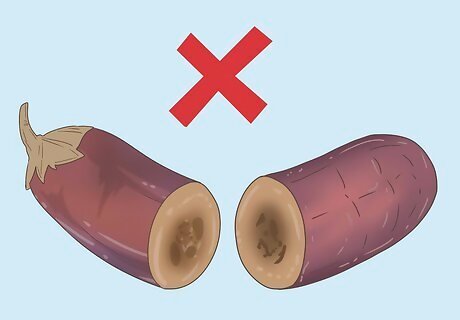
No, not if the eggplant is brown throughout. A brown eggplant is a rotten eggplant, so you definitely don’t want to eat or cook with it. Eating rotten food can make you sick, so it’s not worth the risk.
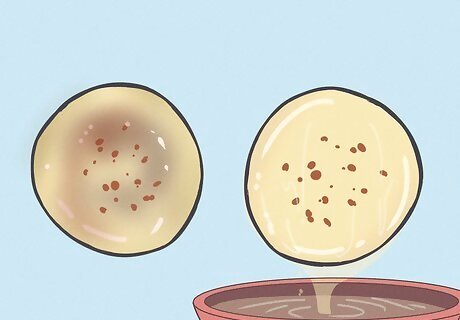
Yes, if the browning occurred after you cut it. Eggplants go through a process called “enzymatic browning” after they’re cut—in other words, the white-colored slices of eggplant start turning brown after they come in contact with the air. Oxidized eggplant is totally safe to eat, as long as you store it correctly. Drizzle some lemon juice over your eggplant slices right after you cut them. The acidity of the lemon juice helps prevent the produce from turning brown.
Ways to Store Eggplant
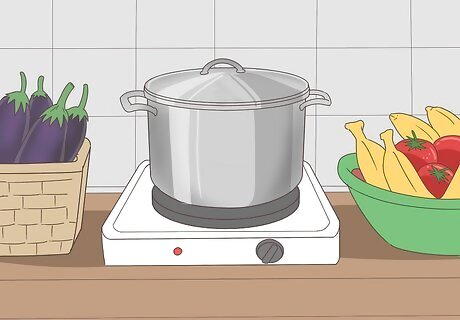
Store the eggplant at room temperature if you’re cooking with it right away. Unlike other fruits and veggies, eggplants thrive when they’re kept out of direct sunlight in a room temperature area. Be sure to use your eggplant within 2-3 days, or else it’ll start to go bad. Store your eggplant a safe distance away from any tomatoes, apples, melons, bananas, or peaches. These fruits create ethylene gas, which makes eggplants go bad sooner.
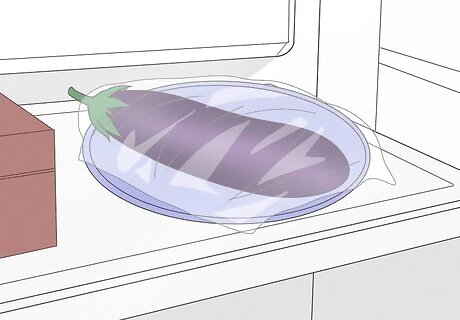
Refrigerate the eggplant if you plan on using it within 5 days. Eggplants prefer room-temperature storage, so stick it in your vegetable crisper drawer for safekeeping. Loosely cover the eggplant with plastic wrap before sticking it in the fridge—this helps the plant stay closer to room temperature and prevents any “chilling injuries” from developing. Chilling injuries are soft, wet sections of eggplant that pop up after refrigeration. Never stick an eggplant in a sealed plastic bag! This makes it go bad really quickly.
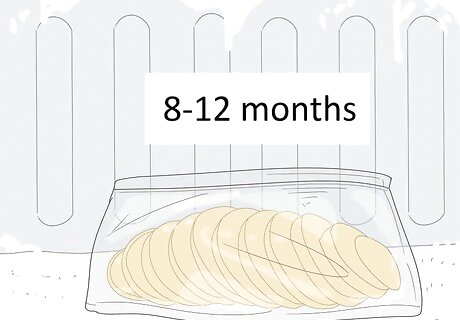
Freeze the eggplant for 8-12 months. Clean off the eggplant, peel away the skin, and chop it up into ⁄3 in (0.85 cm) thick slices. Then, blanch the slices in a boiling mixture of 1 US gal (3.8 L) of water and ⁄2 c (120 mL) of lemon juice for 4 minutes. Then, slide the slices into a freezer-safe safe plastic bag and stick them in the freezer. Mark the freezer bag with the current date, so you don’t forget how old the eggplant slices are. You can also preserve eggplant for long-term storage with a food dehydrator.


















Comments
0 comment